TAINTER CREEK WATERSHED - Gabe Brown of Understanding Ag LLC, and the Soil Health Academy made a presentation to more than 200 producers and interested community members on Friday, Oct. 4. The event was sponsored by the Tainter Creek Watershed Council.
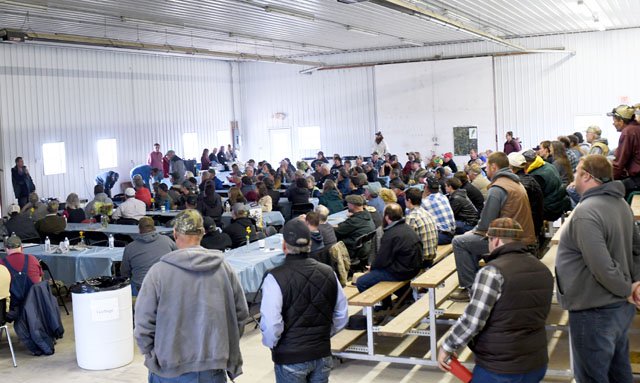

The presentation began with an introduction of some of the farmers of the watershed council. Berent Froiland, event host Brian McCulloh and Ryan Woodhill, Chuck and Karen Bolstad, Jeremy and Jesse Nagel and Bruce Ristow welcomed the crowd to the event.


“The goal of our group is to maintain or improve the water quality of Tainter Creek,” Chuck Bolstad explained.
“The real benefit of being a member of a group like this is to capitalize on the combined wisdom of the group and to increase our farm profitability,” Brian McCulloh said.
Profitability key focus
Brown is one of the pioneers of the current soil health movement, which focuses on regeneration of resources. On his North Dakota farm, Brown and his family holistically integrate grazing and no-till cropping systems, which include a wide variety of cash crops, multi-species cover crops–along with all natural grass-finished beef and lamb. They also raise pastured laying hens, broilers and swine. This diversity and integration has regenerated the natural resources on the ranch without the use of synthetic fertilizers, pesticides and fungicides.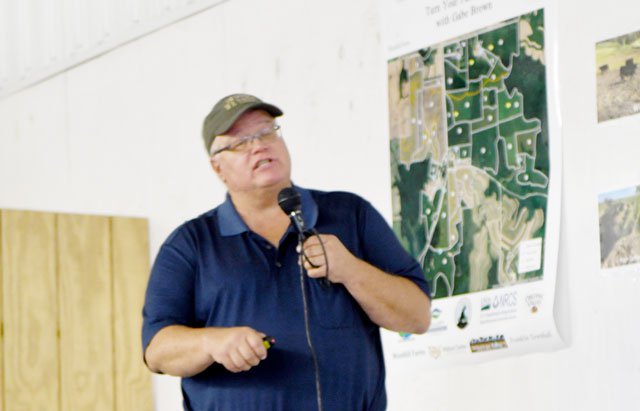

The main thrust of what Brown had to say to those present was that the key to on-farm profitability is in regeneration and resilience, focused on profit rather than yield.
“Regenerative agriculture is a renewal of food and farming systems which aims to regenerate topsoil, increase biodiversity, and improve the mineral, carbon and water cycles,” Brown explained. “All of this is achieved while simultaneously improving farm, ranch and community profitability, while ensuring an enjoyable quality of life.”
It was no secret that Brown, who arrived in Wisconsin wearing a Green Bay Packers sweatshirt, had come to what is widely viewed as the epicenter of the nation’s current farm crisis. Brown’s message of hope was a timely reframe of the current farming paradigm that offered the possibility of a brighter and more sustainable future for family-scale farms in the state.
Brown took meeting participants through a soil health primer that helped those present develop a greater understanding of the importance of healthy, living soils, and the ways that healthy soils and on-farm diversity can solve most of the common problems farmers face every day. He emphasized that what is key is to create a community of life on your farm that can help you reduce the expensive inputs and practices that cost the farmer money and fail to accomplish the goal or yield a return on the investment.

“I used to wake up every morning trying to decide what I was going to kill that day – a weed, a pest, a fungus,” Brown said. “Now, I wake up every morning trying to decide how I can get more LIFE on my ranch!”
Problems and solutions
Brown started his discussion by asking what all farmers everywhere have in common. The answer is soil. The main thrust of his teaching is that building the health, structure and ability to infiltrate water of the soil on your farm is the critical pathway to pursuit of farm profitability. He emphasized that farmers need to stop thinking about yield, and focus their efforts on profitability.
The common problems that Brown addressed, that all farmers face, are adequate nutrients for their crops, too much or too little water, weeds, pests and fungus. His assertion was that the solution to all of these problems lies in building healthy soils and biodiversity on the farm.

Brown shared a quote from long-time holistic management practitioner Don Campbell:
“If you want to make small changes, change the way you do things. If you want to make major changes, change the way you see things.”
Brown’s point is that farmers can’t just keep doing things the same way and expect to produce a different result. Brown encouraged farmers to understand the basics of soil health, and to become keen observers of the specific pieces of land where they farm. He emphasized that no two farms are exactly alike, but that the basic principles he teaches can be adapted to any farm system.

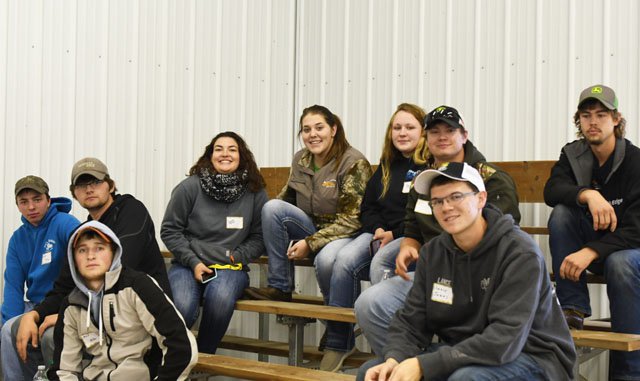

Soil and nutrients
Building carbon in your soils is the fundamental basis of building soil health and improving water infiltration, according to Brown. He says that farms are never going to be profitable paying someone for something that already exists in abundance on their farms, such as nutrients from synthetic fertilizers.
“When you apply synthetic fertilizers to your crops, only between 20-40 percent is actually used by your crops, “ Brown said. “The rest either runs off into your surface waters or infiltrates into your groundwater aquifers.”
Brown pointed out to the farmers present that there is more than enough nitrogen in the air right above the field to supply all of a farm’s nitrogen needs. He said that above every acre on a farm there is 32,000 tons of nitrogen.
They key, he emphasized, is to use a diversity of plants, as well as animals, to build the carbon in the soil, which feeds the soil food web or ‘soil biology.’ This, in turn, will pull the nitrogen out of the air and produce the plant exudates, which supply the other nutrients that crops need. Different plants will supply different exudates, which is why a diversity of plants on every acre versus a monoculture is crucial. Brown describes this process as the ‘liquid carbon pathway.’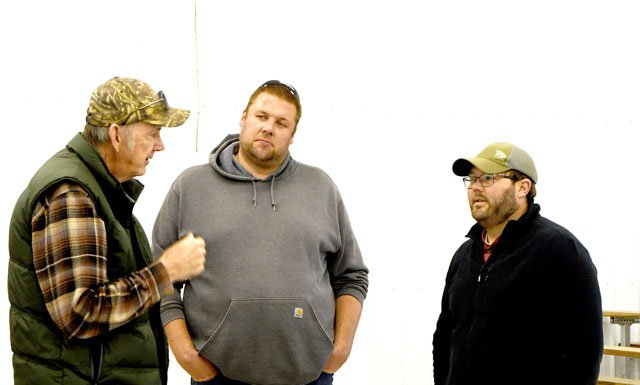

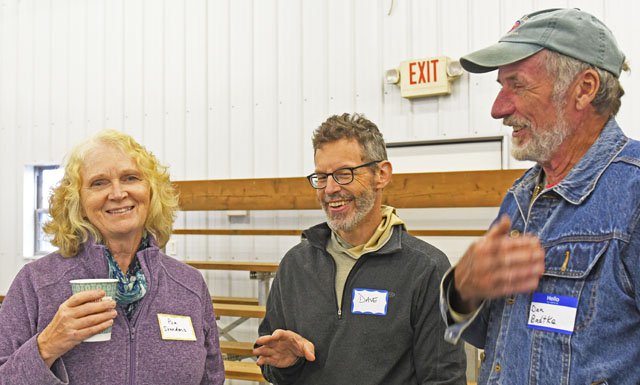

Brown explained that plants pull carbon dioxide out of the air, photosynthesis occurs, and it is converted to liquid carbon. A portion of this liquid carbon is translocated to the roots of the plants, and is exuded into the soil. These exudates are consumed by the microbes in the soil biology.
Another part of the liquid carbon combines with water to form carbonic acid. This mild acid breaks down rocks and organic matter in the soil, which also makes nutrients available.
“Soil organic matter is the ‘house’ that soil microbes live in, and water extractable carbon is the food they eat,” Brown explained.
Brown contrasted the production systems of four different producers, and demonstrated the amounts available in the soil of the most commonly focused on nutrients in cropping systems – nitrogen (N), phosphorous (P) and potassium (K).
The first system was an organic system with tillage and high diversity, with organic soil amendments and no cover crops or livestock. The second was no-till and low diversity, using anhydrous ammonia, insecticides and fungicides, and no cover crops or livestock. The third was a no-till, medium diversity, and high input system, using liquid and dry fertilizers, insecticides and fungicides, and no cover crops or livestock. The fourth is Brown’s farm, described as ‘regenerative.’ His system features no-till, high diversity, low inputs and both cover crops and livestock.
The pounds of all three basic nutrients, available from the soils on the farm, were as follows:
• Farm One: N–2, P–156, K–95
• Farm Two: N–27, P-244, K-136
• Farm Three: N-37, P-217, K-199
• Farm Four: N-281, P-1,006, K-1,749
The key to promoting availability of nutrients in farm soils, according to Brown, is diversity of plants and animals. The results were computed by Dr. Rick Haney, ARS, Temple, Texas.
The test used to obtain these results is the ‘Haney Soil Test,’ named after Dr. Haney. Unlike regular soil tests, which measure only the inorganic fraction of nitrate-nitrogen in soil, the Haney test accounts for both the inorganic and organic fractions of nitrate-nitrogen available to plants in the farm’s soil, as well as lots of other things.
“Soil testing is crucial to farm profitability,” Brown emphasized. “Farmers are not doing the right testing, and they are paying for nutrients they don’t need and could build into the soil themselves through regenerative practices. Further, most of the nutrients they’re paying for are just running off into surface waters or leaching into groundwater.”
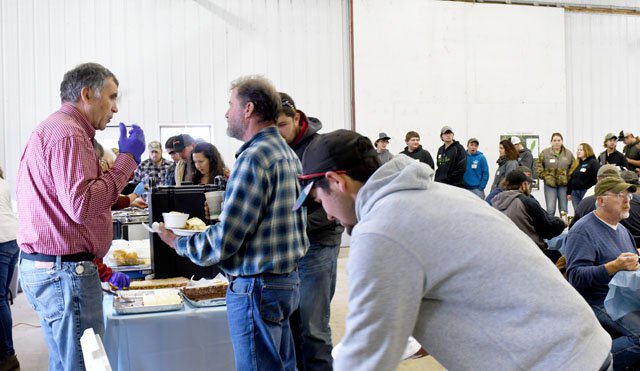

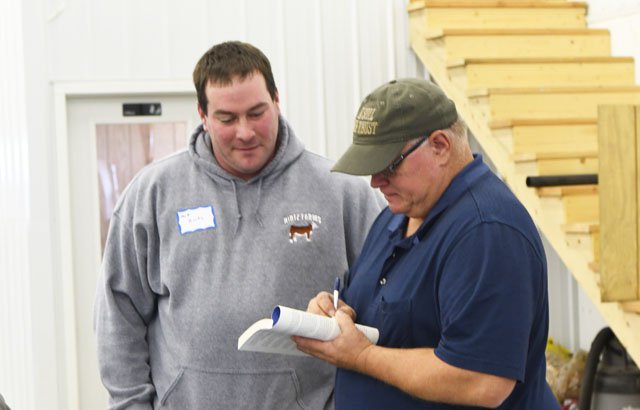

Quantity of water
2019 is a great example of a year where producers have either had too much or too little water. Obviously, for most producers in the upper Midwest, the problem has been too much. For Brown, in North Dakota, the problem is typically too little.
“It is not about how much or how little water you get where you farm,” Brown said. “What is critical is how efficient your soil’s use of available water is.”
Brown said that if your problem is too much water, then you have to maintain continuous cover on your fields to absorb and utilize the excess rather than letting it just run off. If your problem is too little water, then you need to increase its storage capacity by promoting soil structure with air spaces to allow water to infiltrate. On his farm, with five to eight percent soil organic matter, he can store up to two years worth of water in his soils.
Brown said that good soil structure requires an environment, which promotes mycorrhizal fungi in the soil. Brown liked these fungi to the ‘streets and avenues’ in the soil, and emphasized that it is the fungi that allow the nutrients to be transferred through the soil to where they are needed.
What is critical, Brown explained, is the bacteria to fungi ratio in the soil. What is ideal is a one-to-one ratio, but this is not what is seen on most farms. What is crucial to building the population of mycorrhizal fungi in soils is limiting or eliminating synthetic fertilizers, according to Dr. Kris Nichols. In addition, the population of fungi in the farm’s soils will be increased by limiting tillage, limiting use of agricultural chemicals, and maintaining a cover of living plants on the soil for as much of the year as possible.
Mycorrhizal fungi friendly plant species include oats, barley, flax, clovers and sunflowers.
“Mycorrhizal fungi in your soil will put more money in your pockets than anything else,” Brown said.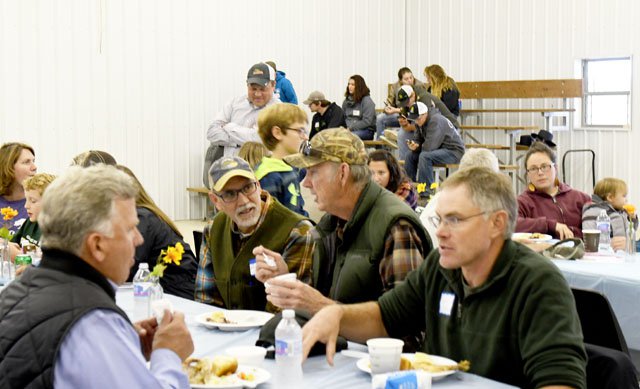

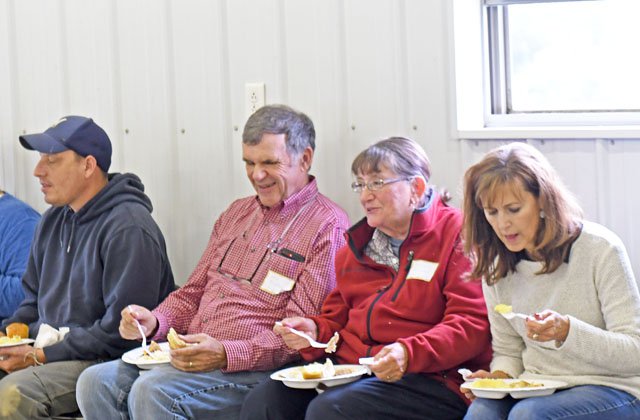

Weeds and pests
Brown emphasized that the reason that producers have pest problems is because of the lack of diversity of plants in their cropping systems. This lack of diversity means that they are not providing a home for the beneficial insects and birds that are the predators of the insects that cause them problems.
“For every insect species that is a pest, there are 1,700 species that are beneficial,” Brown explained.
And weeds, he went on to explain, are the soil’s way of attempting to protect itself and build soil structure and health. Weeds can also provide you with important clues about what your soil resource concerns on the farm are, and provide useful guides about what kind of plant diversity you need to correct the problem.
“Monocultures, such as the common plantings of soybeans and corn seen in this area, are not how nature functions,” Brown said. “Monocultures are detrimental to soil health, and weeds are a sign that the soil is trying to heal itself.”
Brown said that when you combine plantings of your monoculture cash crop with interplantings of a diverse species of cover crops, then even after you take the cash crop off, the cover crop will remain to capture sunlight, build soil health, and increase your soil’s nutrients and resilience in times of weather extremes.
“Producers should let Mother Nature show them what rotations to plant,” Brown said. “You should make the choice about your rotations based on conditions like drought or flooding, and growing a multi-species cash grain crop can increase your profits per acre by 40-60 percent.”
Brown cautioned producers against using coated seeds.
“The coating on the seeds is designed to destroy the natural coating on seeds which is beneficial to the germinating plant, and the neonicotinoids on one kernel of seed corn contains enough to kill 100,000 bees. There is no question that farmers are partially responsible for the colony collapses of bees and other pollinators crucial to agriculture.”
Some common weeds that farmers fight in their fields will actually provide invaluable clues to the resource concerns that a farmer has in a field, and what mix of covers should be planted to try to correct the problem.
“Dandelions are a sign of compaction and a shortage of calcium; quack grass is a sign of compaction; Russian thistle is a sign of salinity; chicory is a sign of calcium deficiency; ragweed is a sign of excess nitrogen; and the list goes on,” Brown said.

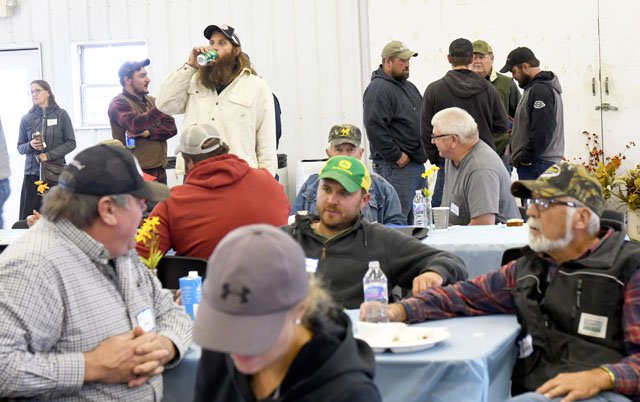

Six principles
In pursuing a regenerative path to profitability on the farm, Brown lays out six principles that can guide producers:
Context: You need to develop an understanding of the ground you are farming that is historical, ecological, financial (capital), community – family and society, and spiritual. Brown emphasizes that you need to develop an understanding of your context before you begin to make decisions.
Reduce Disturbance: The least disturbance in the form of tillage or use of synthetic agricultural chemicals will do the most to improve soil organic matter and water infiltration. Brown pointed out that soils can be improved, and that almost everyone is now farming degraded soils. He observed that in 1930, the average soil organic matter in Wisconsin was eight percent, and in 2018 it is less than two percent. Without use of synthetics, you will do more to increase mycorrhizal fungi in your soils and your profits than anything else.
“Today’s farming models misuse carbon,” Brown said. “Fertilizers accelerate carbon release from the soil; combining and baling hay remove carbon; and tillage releases carbon.”
Armor on Soil: Brown’s colleague, retired USDA-NRCS soil scientist Ray Archuleta, was quoted about the condition of soils left bare after harvest, “Those soils are naked, hungry, thirsty, and running a fever,” Archuleta says. Soil that is left bare will develop a crust to protect itself, and this will cause its temperature to increase. “At 70 degrees, 100 percent of available moisture can be used for growth. It can be 90 degrees, and if there is residue on the soil, the temperature beneath it will be 87 degrees whereas the temperature of the soil left bare will be 107 degrees, which will shut down plant growth; at 140 degrees, you begin to destroy the soil biology.” Planting into a residue or a living cover also provides the farmer with the ability to suppress weeds, reducing the need for use of biology destroying herbicides.”
Diversity: Brown has shown in test plots that planting of a monoculture on a field is more threatened in extreme conditions of drought or flooding, and he has been able to quadruple his production on fields during a drought where there was a diversity of plants growing and not just one species. This diversity also promotes the mycorrhizal fungi, which provide for the needs of the plant they are hosted on, but also through their interconnected web, supply nutrients to multiple plants.
Continuous Living Root: Maintaining a living root in the soil continuously throughout the year means you are maximizing the capture of carbon into your soils. Brown has even found that healthy soils with continuous cover can create a micro-climate which can extend the growing season. Doing this results in feeding the soil biology, and creating habitat for insects and pollinators, which can control populations of pests. Brown says that he harvests a variety of cash crops off his acres every year, and “will take profits over yields any day.” He grows a variety of cash crops on 70-80 percent of his acres every year. On those acres, he also grows a cover crop either before or after or with the cash crop. On the other 20-30 percent of his acres will be double crop or cover crops, grazed by livestock.
Animal Impact: Brown explained that a healthy ecosystem requires both animals and insects. On his acres, he produces grass-fed beef and lamb, and pastured pork, poultry and eggs. When asked what he would do with a struggling dairy farm in Wisconsin, he replied that he would convert it to a grass-based dairy on a seasonal basis combined with more diversity. By grazing a cover crop, Brown says he sees an average daily gain of three or more pounds per day, and the average brix of the multi-species forage is 20 or more. Managed rotational grazing will leave a good armor on the soil which will suppress weeds and build soil health, and the animals will also deposit their manure over the landscape. Brown says that he relies very little on hay, and uses bale grazing as a means to return the carbon to his fields. He is quoted as saying, “It is much more fun working with life than with death.”



